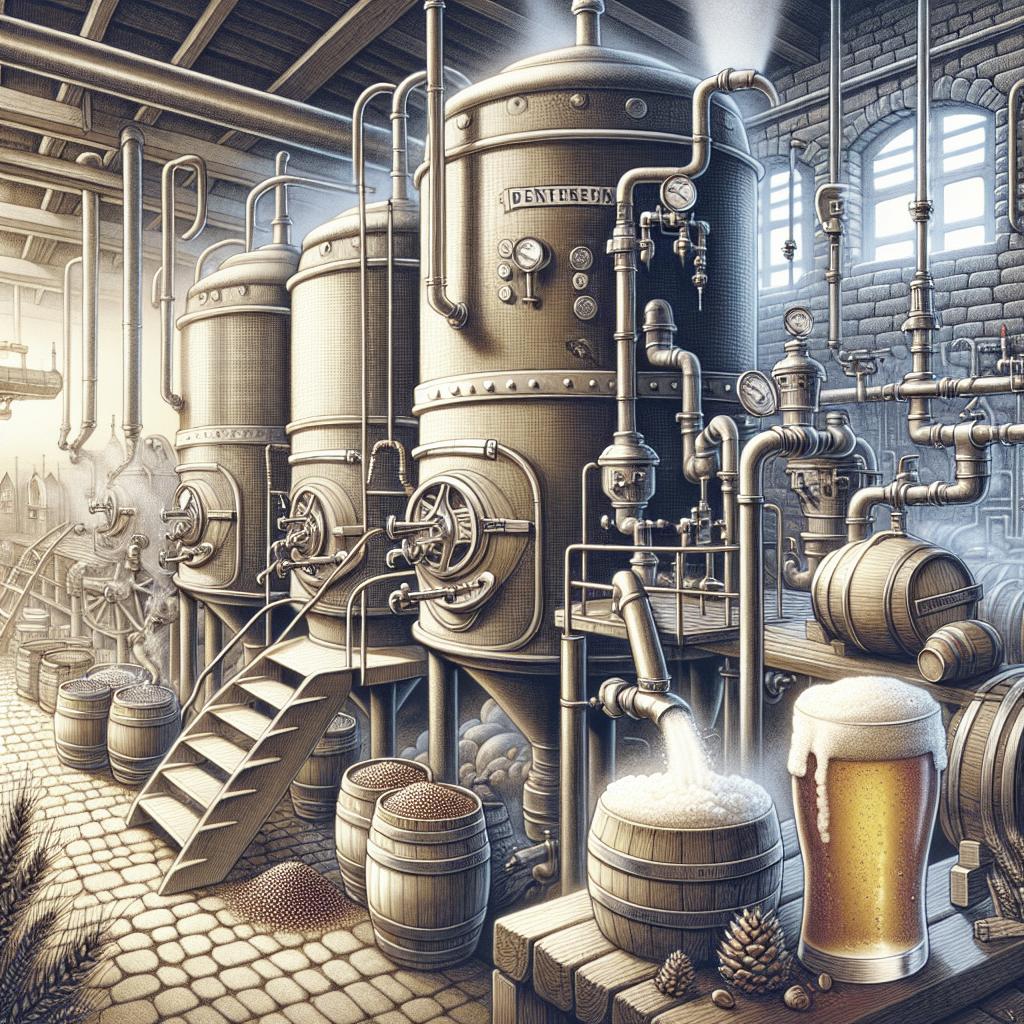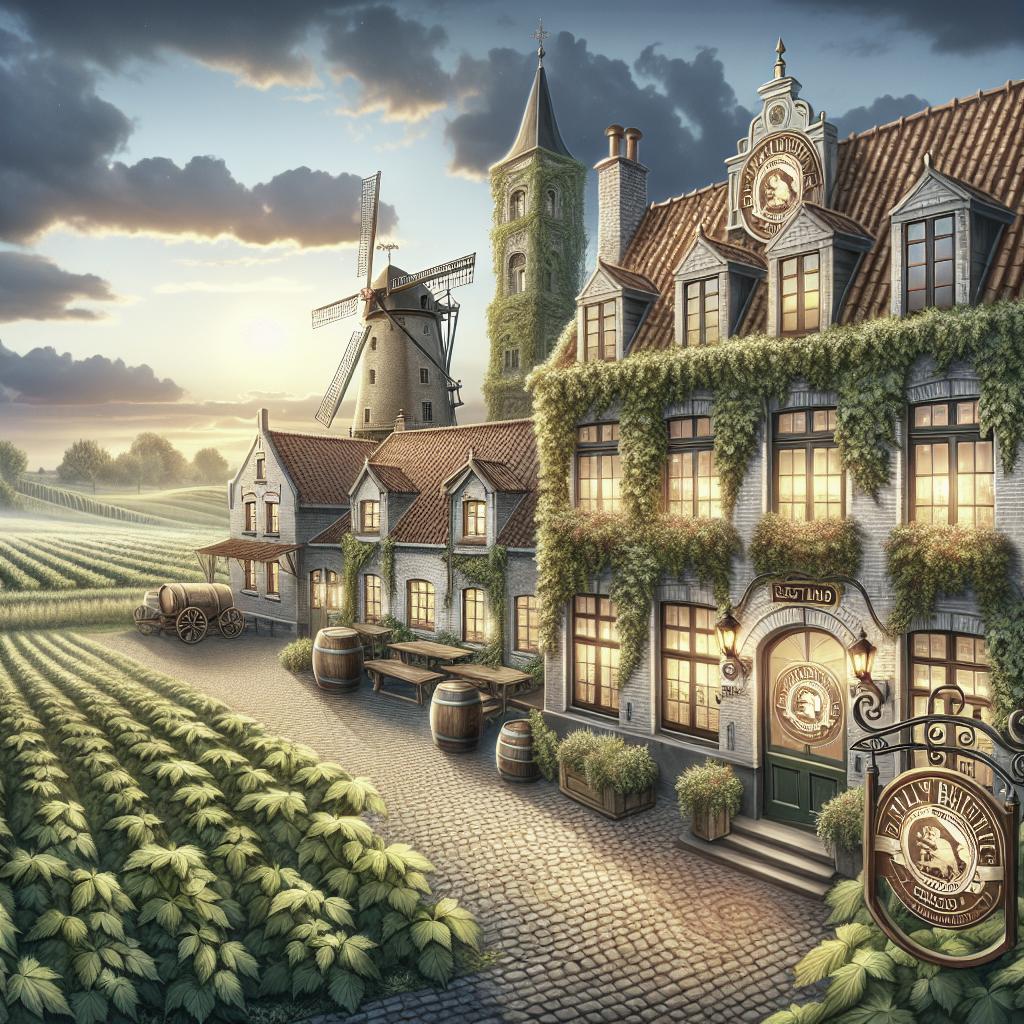“`html
Belgium, known for its rich beer culture, takes pride in its unique fermentation processes, particularly in the creation of lambic beers. The artistry of brewing lambic involves spontaneous fermentation, a method distinctively Belgian, producing beers with remarkable depth and complexity. In this blog post, we explore the historical roots of lambic, the intricate brewing process, and the variety of styles and flavors that have captivated beer enthusiasts globally. We also highlight the notable breweries bringing this ancient craft to life, diving into the importance of blending and aging lambic. Finally, we discuss ideal pairing options, key events for lambic enthusiasts, and address frequently asked questions about this unique brew.
History of Belgian Lambic
The origins of lambic beer trace back to the small villages and towns surrounding Brussels, Belgium, dating back to at least the 13th century. This unique style of beer is one of the few surviving examples of ancient brewing techniques that have persisted through centuries. The traditional brewing process, deeply rooted in culture and time-honored practices, has become a testament to Belgium’s rich brewing heritage.
Lambic beers are often considered a cherished link to the past. They offer a sensory experience that connects modern drinkers with generations of brewers who have mastered this craft. Their historical significance extends beyond mere taste, providing a tangible connection to Belgium’s brewing traditions.
Belgian Lambic Brewing Process
At the heart of lambic beer brewing is spontaneous fermentation—a process that allows natural yeasts and bacteria prevalent in the environment to initiate fermentation. Unlike conventional brews, lambic beers do not use cultivated yeast. Instead, the wort is exposed to open air, inviting native microorganisms to create a complex, sour beer with a unique character.
The brewing process involves using aged hops, which are less bitter, primarily for their preservative properties rather than aroma or flavor. After the brew is cooled in large shallow vessels called “coolships,” it is transferred to wooden barrels where fermentation and maturation occur over extended periods, sometimes several years.
Lambic Styles and Flavors
There is a fascinating diversity among lambic beers, with each style showcasing different fermentation results and blending techniques. Gueuze, for instance, is a blend of young and old lambics, resulting in a sparkling, champagne-like beer. Kriek is a fruit-infused variant flavored with cherries during the fermentation process, offering a tart, fruity profile.
Other styles, such as Framboise or Muscat, use raspberries or grapes, respectively, creating a multitude of flavor palettes that attract varied palates. This wide range of styles allows lambic beers to cater to a diverse audience, from avid beer enthusiasts seeking complexity to newcomers enjoying fruity refreshment.
Notable Lambic Breweries
Belgium hosts several iconic lambic breweries, each contributing to the preservation and innovation of this brewing art. Cantillon, perhaps the most renowned, has become synonymous with traditional lambic, embodying both innovation and adherence to age-old methods. Their limited production lines, including Gueuze and Rosé de Gambrinus, are highly sought after.
Other notable names include Boon, Drie Fonteinen, and Lindemans, each bringing their unique touch to the lambic tradition. These breweries offer a variety of interpretations, from classic dry and sour to more modern, slightly sweeter versions, catering to a broad spectrum of lambic enthusiasts.
Blending and Aging Lambic
The art of blending is central to lambic production, allowing brewers to balance the flavors and complexities of different barrels and brewing years. This practice is crucial for creating Gueuze, which is known as the “Champagne of Belgium.” Brewers blend young lambics, which provide sweetness, with older lambics, contributing intricate flavors and tartness.
Aging lambic in wooden barrels results in a remarkable evolution of flavor. These barrels, often made from oak, add subtle nuances, while the prolonged maturation period allows the flavors to develop complexity, leading to the signature lambic profile cherished by brewers and drinkers alike.
Lambic Characteristics
Lambic beers are characterized by their sour, tart profiles with understated carbonation, often setting them apart from other beer types. The influence of native yeasts and bacteria gives these beers their distinctive funk and earthy flavors, which can be polarizing to new drinkers but adored by aficionadas of the style.
The long fermentation and aging periods imbue each lambic with a unique character. The variable influence of barrel aging, the fruit infusions, and the subtle play of malts and hops create a multifaceted sensory experience that is as diverse as it is profound.
Selecting and Pairing Belgian Lambic
When selecting a Belgian lambic, consider the style and flavor preferences. For a more traditional taste, a Gueuze offers a balanced and sparkling profile, whereas a fruit-infused variant like Kriek or Framboise may appeal to those favoring a fruity, refreshing taste.
Lambic beers pair wonderfully with a variety of foods. Their acidity and complexity complement a range of dishes, from savory charcuterie and rich cheeses to sweet desserts. The sour profile can help balance out richer, creamier foods, creating a delicious culinary experience.
Lambic Tourism and Events
Belgium’s dedication to its brewing heritage offers enthusiasts various opportunities for exploration and discovery. The country hosts numerous lambic beer festivals, including the well-known Brussels Lambic Weekend and the Toer de Geuze, where participants can visit breweries and sample an array of lambics in their traditional regions.
These events provide an immersive experience into Belgian beer culture, allowing visitors to savor authentic flavors, learn about brewing techniques, and meet the passionate individuals behind these exquisite brews. They are must-visit excursions for any beer lover.
Frequently Asked Questions
Key Takeaways
Understanding the process and culture surrounding Belgian lambics enhances appreciation and enjoyment. From learning the historical roots to tasting different styles and blends, lambic beers provide a unique window into the world of traditional Belgian brewing.
What is the difference between lambic and other types of beer?
The fundamental difference lies in the fermentation process. Lambic beers undergo spontaneous fermentation, utilizing wild yeasts and bacteria, whereas other beers typically use carefully cultivated yeast strains. This results in a sour, complex flavor profile unique to lambics.
Which brands produce the best Belgian lambic beers?
Renowned lambic breweries include Cantillon, Boon, Drie Fonteinen, and Lindemans, each offering diverse interpretations of the lambic style and contributing to its rich heritage.
Where is the ideal place to purchase lambic beer?
While local Belgian breweries provide the most authentic experiences, international liquor stores with an extensive selection of craft beers and specialized Belgian beer shops may also carry lambic offerings.
How does the Framboise lambic differ from a regular lambic?
Framboise lambic is a variant infused with raspberries, providing a distinctly fruity character. While maintaining the sourness and complexity of traditional lambics, it introduces a vibrant, berry-driven flavor profile.
Why are lambic beers typically more expensive?
Lambic beer prices are influenced by their lengthy production time, the traditional methods employed, and the aging process, all of which contribute to their higher cost compared to mass-produced beers.
Is there a connection between lambic and sour beers?
Yes, lambics are a type of sour beer, primarily due to their fermentation process involving wild yeast strains and bacteria. This results in the tart, complex taste profile that is characteristic of lambics and other sour beers.
| Aspect | Details |
|---|---|
| History | Originating in Belgium, lambics have centuries of history connecting present-day drinkers with ancient brewing methods. |
| Brewing Process | Employs spontaneous fermentation with natural yeasts and non-bitter aged hops, followed by barrel aging. |
| Styles and Flavors | Gueuze, Kriek, and more, offering diverse flavors from tart to fruity. |
| Notable Breweries | Includes Cantillon, Boon, Drie Fonteinen, and Lindemans, known for high-quality lambics. |
| Selecting and Pairing | Lambics pair well with various foods due to their complexity and acidity. |
| Tourism Events | Festivals like Brussels Lambic Weekend and Toer de Geuze highlight the rich lambic culture. |
“`


